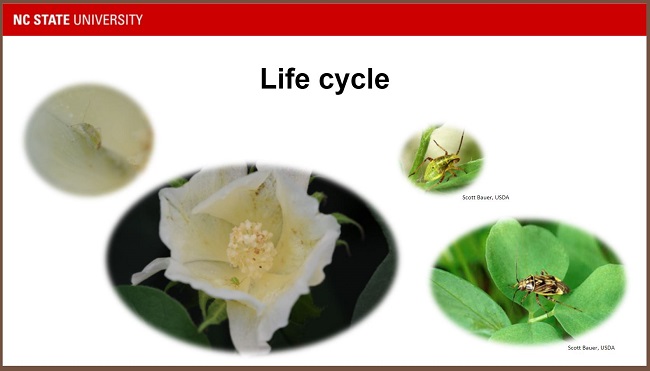St. Paul, MN (July, 2019)—The tarnished plant bug is a profligate pest, which means it can feed on many different species, including cotton. Over the last 10 years, the tarnished plant bug has become one of the most important pests of cotton in North Carolina and Virginia. In the webcast “Tarnished Plant Bug in North Carolina and Virginia,” Dominic Reisig (College of Agriculture and Life Sciences at North Carolina State University) introduces the pest, discusses its threat to cotton, and makes general management recommendations.

After detailing the life cycle of the tarnished bug plant, Reisig explains that the pest primarily damages cotton by feeding on its reproductive tissues. The tarnished bug plant can be easily managed in cotton, but it is important to sample correctly and apply the threshold properly. These processes are described along with general management tips, which include planting early, planting away from other hosts, and blocking cotton together. Farmers should also avoid overfertilizing and overirrigating.
Both webcasts are available through the “Focus on Cotton” resource on the Plant Management Network. This resource contains more than 75 webcasts, along with presentations from six conferences, on a broad range of aspects of cotton crop management: agronomic practices, diseases, harvest and ginning, insects, irrigation, nematodes, precision agriculture, soil health and crop fertility, and weeds. These webcasts are available to readers open access (without a subscription).
The “Focus on Cotton” homepage also provides access to “Cotton Cultivated,” a new resource from Cotton Incorporated that helps users quickly find the most current cotton production information available. These and other resources are freely available courtesy of Cotton Incorporated at www.plantmanagementnetwork.org/foco.
